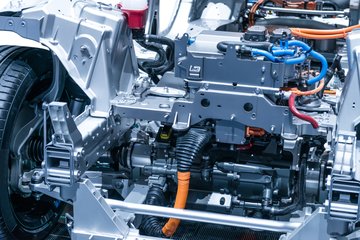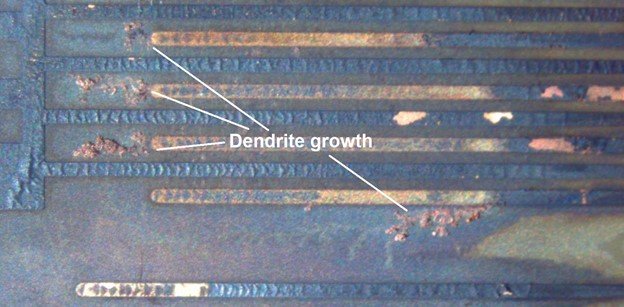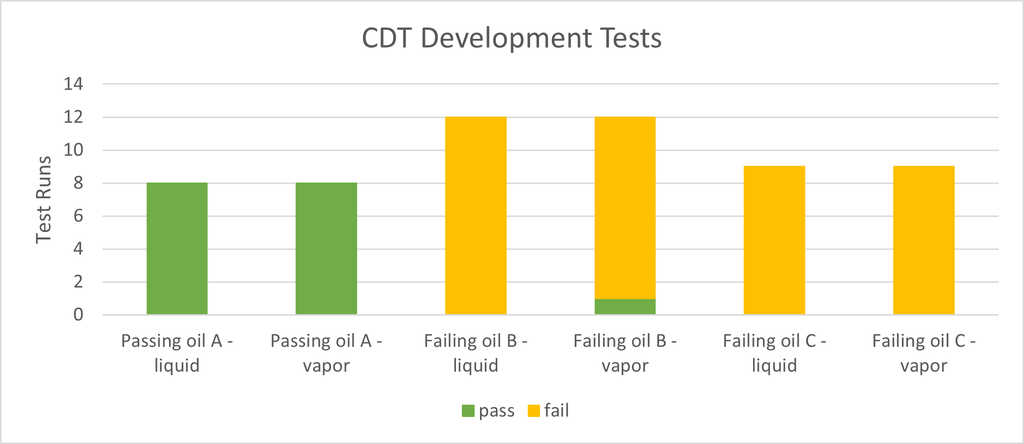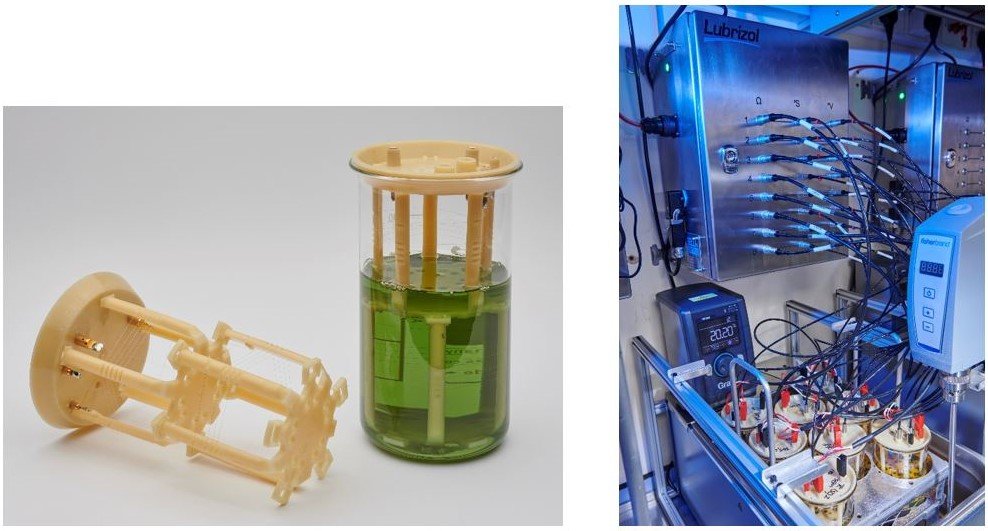Electric Vehicle Lubricant and Fluid Testing
 Savant Group Authors: Sarah Nuss-Warren, Technical Development and John Bucci, VP of Technical Development
Savant Group Authors: Sarah Nuss-Warren, Technical Development and John Bucci, VP of Technical Development
Electric vehicles (EV) continue to gain importance in the
automotive industry. This includes hybrid electric vehicles (HEV),
battery electric vehicles (BEV), and plug-in hybrid electric vehicles
(PHEV). With the rising importance of EVs, lubricants remain
critical, but the critical characteristics of the lubricants are
changing. Frequently, EVs use a driveline system where the electric
motor, as well as the transmission and other driveline components, can be
exposed to the lubricant. Many manufacturers have continued to use
axle oils, manual transmission fluids, or ATFs in this type of
application, but this can cause problems in some cases. For
instance, The Lubrizol Corporation and Scania have published images of eMachine stators
after failures that show melting of copper from shorts where the root
cause was determined to be the lubricant in contact with the motor (Hunt
and Prengaman, 2020; Nyman, 2021).
New SAE J3200
Information Report
 A group of SAE members with technical expertise, including employees of
the Savant Group, formed to draft an Information Report about the
critical characteristics for Electric Drivetrain Fluids (EDFs). The
result is draft document J3200. This document contains guidance
about the characteristics considered to be most important for selecting
fluids for use where the fluid may come into contact with electrical
components of EVs, such as the motor, electrical connections, or other
circuits. In addition to characteristics common to all drivetrain
lubricant performance, such as wide temperature range and anti-wear
protection, the group identified a need for good compatibility with
copper and other metals, thermal and electrical (insulating) properties,
and resistance to oxidation, which are critical lubricant
characteristics for compatibility with EV applications.
A group of SAE members with technical expertise, including employees of
the Savant Group, formed to draft an Information Report about the
critical characteristics for Electric Drivetrain Fluids (EDFs). The
result is draft document J3200. This document contains guidance
about the characteristics considered to be most important for selecting
fluids for use where the fluid may come into contact with electrical
components of EVs, such as the motor, electrical connections, or other
circuits. In addition to characteristics common to all drivetrain
lubricant performance, such as wide temperature range and anti-wear
protection, the group identified a need for good compatibility with
copper and other metals, thermal and electrical (insulating) properties,
and resistance to oxidation, which are critical lubricant
characteristics for compatibility with EV applications.
Tests currently used for driveline fluids were considered adequate for testing oxidative properties of EDFs, though limits may be different. Existing tests for thermal conductivity and electrical insulation properties were also considered adequate for EDFs, though they are not typically applied to driveline lubricants in non-EV applications. While existing foam, air release, and aerations tests were thought to be useful in evaluating EDFs, the higher shaft speeds and lower sump volume could play a role. There are no EV-specific aeration tests that have currently been introduced, but the future may bring the development of equipment-specific tests if challenges are encountered in the field.
OEMs and lubricant companies have been testing rigid plastics and
flexible materials for tensile strength after fluid exposure to determine
compatibilities of materials known to be in the systems of interest.
In addition, a number of proprietary tests were developed for
materials compatibility of motor wires with EV fluids; however, no
industry-standard tests or standard specimen have been identified.
The Savant Group continues to work with a consortium of companies
including Ford, The Lubrizol Corporation, and APL to determine if more broadly applicable
standardized tests can be developed in this area.
The most exciting test development has been around evaluating copper
corrosion properties for EDFs. This is likely because the
previously-existing tool for determining copper corrosion, ASTM D130, is
considered to be ineffective for EV applications. Where the copper
in the eMachine, electrical connectors, or other circuits, is exposed to
the lubricant, it is often exposed to the vapor as well as the liquid.
In addition, the temperature and exposure times in D130 are not
ideal for detecting problems in EV applications.
The Conductive
Deposit Test
The Conductive Deposit Test (CDT) exists to determine to what extent
conductive deposits will form on exposed copper in tight spaces exposed
to lubricant or vapor. Current thinking is that copper corroded from the
surface can react with components of the liquid or vapor phase and
deposit on the exposed copper. If such a deposit bridges the gap between
conductors at different electrical potential, a catastrophic short can
form. This could result in rapid failure of the electrical device
and may explain some of the motor failures seen in the field.
A circuit board acts as the test specimen representing the exposed copper
components in the EV. It conveniently holds the spacing between
copper conductors and provides connections to apply voltages and make
measurements. The circuit board is placed in a small sample of test
fluid with the liquid detection circuit in the fluid and the vapor
detection circuit above the fluid. The sample is heated in a liquid
bath for a duration from a few hundred hours to 1000 hours and the
circuits are monitored. As conductive deposits form dendrites that
connect two circuits, the resistance between the two circuits drops and
is monitored in real-time. If the resistance drops below a critical
value and a given time, the fluid is considered to have failed by showing
conductive-deposit-forming tendencies. This can occur in the vapor phase,
the liquid phase, or both. In addition, a continuity loop is
monitored to ensure that high resistances maintained are not the result
of a break in the circuit as copper is corroded. Finally, the
temperature of the liquid and vapor phases are monitored to provide
evidence that test conditions have been properly maintained.

Figure 1. Dendrite growth on this
circuit board during a Conductive Deposit Test resulted
in an electrical
short between two circuits and a failing resistance value.
For the past two years, Savant Labs has been actively developing this
test with assistance from the industry consortium previously mentioned.
Repeated tests have distinguished between oils known to have good EV
performance and oils known to have poor EV performance and are now
offering this test to the industry. A draft Federal
Test Method was submitted for this test, and it is referenced in the SAE J3200 Information Report.

Figure 2. The conductive deposit test
has repeatably differentiated between oils that do well in EV
applications and oils that do poorly in EV applications.
The Wire Corrosion
Test
The Wire Corrosion Test (WCT) is also available at Savant Labs.
This patented test has been under development by The Lubrizol Corporation for the
past several years, and a draft Federal Test Method has been submitted.
Data Lubrizol has collected using this test has led to several
interesting publications on copper corrosion in EVs. In this test,
a thin copper wire of known length and resistance is placed in the liquid
and vapor phase of a lubricant sample and a small voltage is applied. The
lubricant sample is heated for a period of 72 hours. The resistance of
the wire in each phase is measured separately, and the corrosion rate can
be calculated based on the increase in resistance. Because this
test is relatively short and the temperature can be adjusted, The Lubrizol Corporation has investigated the corrosion rate for various lubricants across the
temperature range expected in EVs. One interesting finding was that the
corrosion rate of lubricants responds uniquely to temperature, so an
increase of ten degrees may dramatically affect the copper corrosion
behavior of one fluid but not another (Hunt and Prengaman, 2020).

Figure 3. (Left) The
wire and test fluid positioned for the WCT test. (Right) The WCT
underway. Photos provided courtesy of Lubrizol Corporation and used
with permission.
Finally, the extended D130 and vapor phase copper test were developed by Afton. Unlike the other tests developed to investigate copper corrosion and deposits in EVs, these tests do not employ powered circuits. The extended D130 test simply extends the time in which the copper strip is exposed to the heated fluid to 168 hours or another desired duration. In addition to the visual rating at end of the test, samples can be withdrawn for elemental analysis by ICP throughout the test and at the end of the test. The amount of soluble copper in the solution is an indication of the copper that has leached out of the copper strip. In the vapor phase copper test, a copper strip hangs above the heated sample in a closed container. After 48 hours, the strip is visually rated for corrosion. Test methods are being formalized for these tests, and Savant Labs participated in the interlaboratory studies. Therefore, Savant is pleased to offer the extended D130 and vapor phase copper test, as well.
The advancements of electric vehicles and their specialized lubricants
are creating opportunities for innovation in fluids and fluid
testing. Savant Labs have been developing expertise in these new
areas of testing by being involved with an industry consortium and
working on the SAE J3200 Informational Report. As the need
for these tests grows, Savant is available to support our customers'
needs. Contact
us for more information or to request a quote.
References
SAE 2020-01-0561 “Understanding Vapor and Solution Phase
Corrosion of Lubricants Used in Electrified Transmissions” Hunt, Gregory
and Prengaman, Christopher.
Nyman Pär, “Evolution of Lubricants for electrified Transmissions
and Scania E-Motor Failure Case Study,” presentation, 4-9-2021
SAE WIP 2019-04-24 “Electric Drivetrain Fluids (EDF)” J3200 Information
Report.
